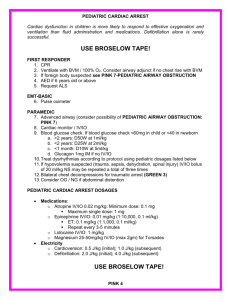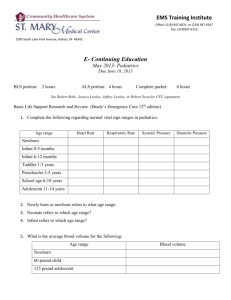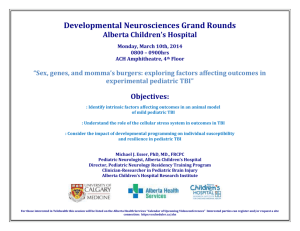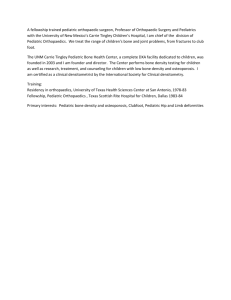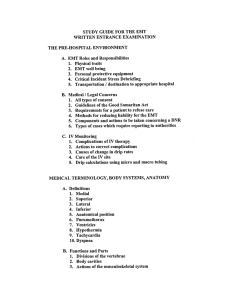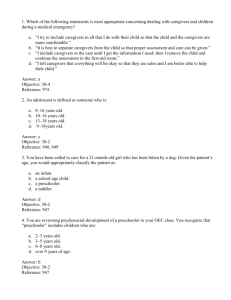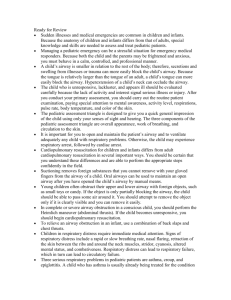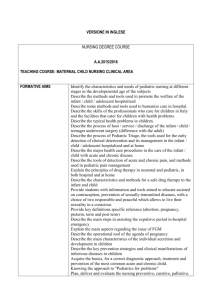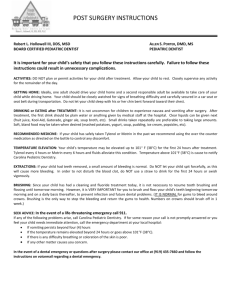Chapter 32: Pediatric Emergencies
advertisement
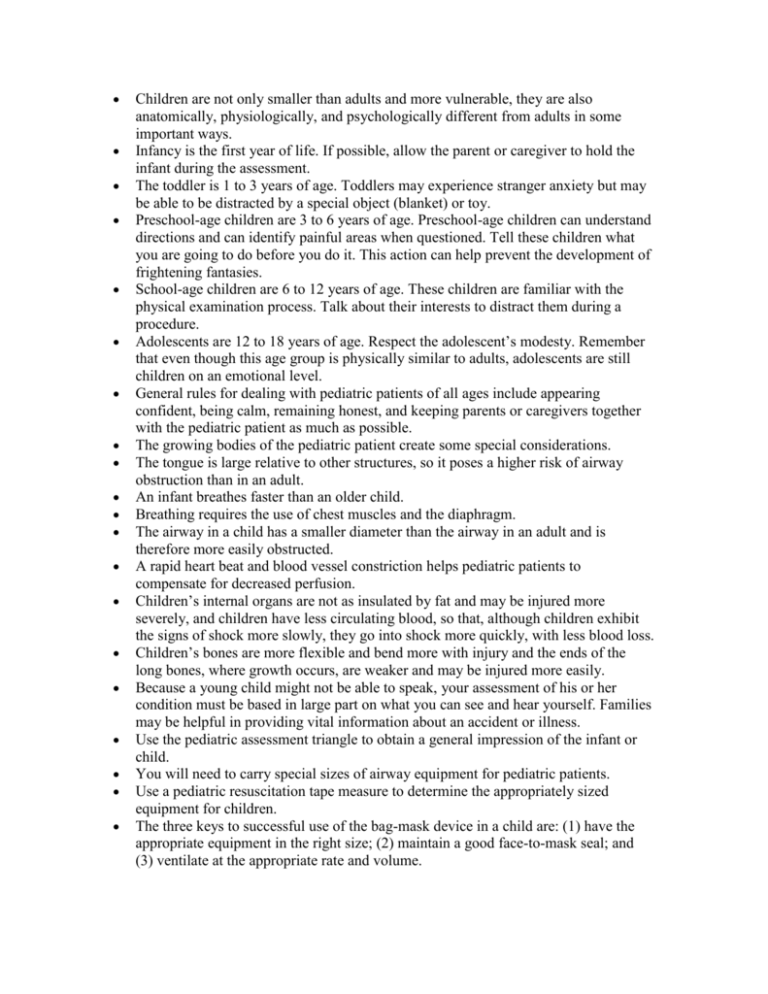
Children are not only smaller than adults and more vulnerable, they are also anatomically, physiologically, and psychologically different from adults in some important ways. Infancy is the first year of life. If possible, allow the parent or caregiver to hold the infant during the assessment. The toddler is 1 to 3 years of age. Toddlers may experience stranger anxiety but may be able to be distracted by a special object (blanket) or toy. Preschool-age children are 3 to 6 years of age. Preschool-age children can understand directions and can identify painful areas when questioned. Tell these children what you are going to do before you do it. This action can help prevent the development of frightening fantasies. School-age children are 6 to 12 years of age. These children are familiar with the physical examination process. Talk about their interests to distract them during a procedure. Adolescents are 12 to 18 years of age. Respect the adolescent’s modesty. Remember that even though this age group is physically similar to adults, adolescents are still children on an emotional level. General rules for dealing with pediatric patients of all ages include appearing confident, being calm, remaining honest, and keeping parents or caregivers together with the pediatric patient as much as possible. The growing bodies of the pediatric patient create some special considerations. The tongue is large relative to other structures, so it poses a higher risk of airway obstruction than in an adult. An infant breathes faster than an older child. Breathing requires the use of chest muscles and the diaphragm. The airway in a child has a smaller diameter than the airway in an adult and is therefore more easily obstructed. A rapid heart beat and blood vessel constriction helps pediatric patients to compensate for decreased perfusion. Children’s internal organs are not as insulated by fat and may be injured more severely, and children have less circulating blood, so that, although children exhibit the signs of shock more slowly, they go into shock more quickly, with less blood loss. Children’s bones are more flexible and bend more with injury and the ends of the long bones, where growth occurs, are weaker and may be injured more easily. Because a young child might not be able to speak, your assessment of his or her condition must be based in large part on what you can see and hear yourself. Families may be helpful in providing vital information about an accident or illness. Use the pediatric assessment triangle to obtain a general impression of the infant or child. You will need to carry special sizes of airway equipment for pediatric patients. Use a pediatric resuscitation tape measure to determine the appropriately sized equipment for children. The three keys to successful use of the bag-mask device in a child are: (1) have the appropriate equipment in the right size; (2) maintain a good face-to-mask seal; and (3) ventilate at the appropriate rate and volume. Signs of shock in children are tachycardia, poor capillary refill time, and mental status changes. You must be very alert for signs of shock in a pediatric patient because they can decompensate rapidly. Febrile seizures may be a sign of a more serious problem such as meningitis. The most common cause of dehydration in children is vomiting and diarrhea. Lifethreatening diarrhea can develop in an infant in hours. Fever is a common reason why parents or caregivers call 9-1-1. Body temperatures of 100.4°F (38°C) or higher are considered to be abnormal. Trauma is the number one killer of children in the United States. A victim of sudden infant death syndrome (SIDS) will be pale or blue, not breathing, and unresponsive. He or she may show signs of postmortem changes, including rigor mortis and dependent lividity; if so, call medical control to report the situation. Carefully inspect the environment where a SIDS victim was found, looking for signs of illness, abusive family interactions, and objects in the child’s crib. Provide support for the family in whatever way you can, but do not make judgmental statements. Any death of a child is stressful for family members and for health care providers. In dealing with the family, acknowledge their feelings, keep any instructions short and simple, use the child’s name, and maintain eye contact. Be prepared to respond to philosophical as well as medical questions, in most cases by indicating concern and understanding; do not be specific about the cause of death. Be alert for signs of posttraumatic stress in yourself and others after dealing with the death of a child. It can help to talk about the event and your feelings with your EMS colleagues.
